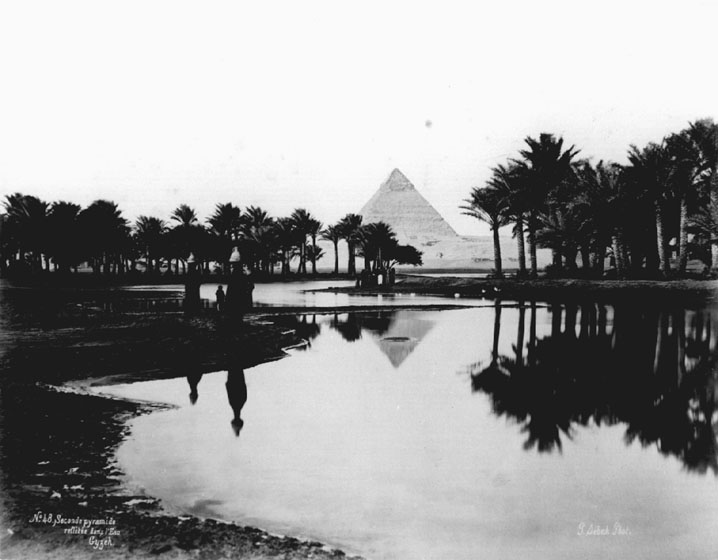The Nile inundation.
Egypt was created by the Nile (the ancient Egyptian name of it was Iteru) and the ancient
Egyptians were entirely
dependent on it. In the past, Egypt's climate was more humid than it is today, but rain was a rare
event. It was the river which provided all the water for Egyptian households, gardens and
farms.
 Every year in mid-July, the river rose by as much as several meters when the Nile inundation
arrived.
The huge increase in the volume of water in the river was due to rains in the south, outside the
Egyptian borders, in the mountains of Ethiopia. The whole of the Nile valley was transformed
into a huge lake: fields were completely submerged
and many cities and villages became temporary islands. When the water receded in September
it left behind a deposit of very fine silt which served as natural fertilizer for fields.
Every year in mid-July, the river rose by as much as several meters when the Nile inundation
arrived.
The huge increase in the volume of water in the river was due to rains in the south, outside the
Egyptian borders, in the mountains of Ethiopia. The whole of the Nile valley was transformed
into a huge lake: fields were completely submerged
and many cities and villages became temporary islands. When the water receded in September
it left behind a deposit of very fine silt which served as natural fertilizer for fields.
Nowadays, the effect of the Nile inundation is not so noticeable because of the dams which have
been built in the southern part of Egypt, especially at Aswan.
The picture shows the area near the pyramids at Giza during inundation at the
end of the last century, before the building of the Nile dams. Photograph
by Pascal Sébah, Griffith Institute photo. 3345. © Griffith
Institute, Ashmolean Museum, Oxford.
Back to Chariot to Heaven
or
Back to The Sphinx Nose.
 Every year in mid-July, the river rose by as much as several meters when the Nile inundation
arrived.
The huge increase in the volume of water in the river was due to rains in the south, outside the
Egyptian borders, in the mountains of Ethiopia. The whole of the Nile valley was transformed
into a huge lake: fields were completely submerged
and many cities and villages became temporary islands. When the water receded in September
it left behind a deposit of very fine silt which served as natural fertilizer for fields.
Every year in mid-July, the river rose by as much as several meters when the Nile inundation
arrived.
The huge increase in the volume of water in the river was due to rains in the south, outside the
Egyptian borders, in the mountains of Ethiopia. The whole of the Nile valley was transformed
into a huge lake: fields were completely submerged
and many cities and villages became temporary islands. When the water receded in September
it left behind a deposit of very fine silt which served as natural fertilizer for fields.